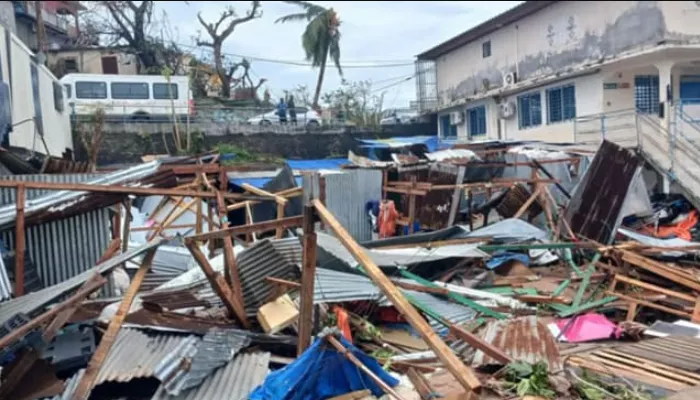Cyclone Chida, a powerful Category 4 storm, struck Mayotte, a French territory in the Comoros Archipelago, on December 14, causing widespread destruction and leaving the islands in chaos. Local officials warn that it will take days to fully assess the extent of the devastation.
The cyclone, described as the most severe to hit the islands in a century, unleashed winds exceeding 225 km/h and waves more than five meters high. Mayotte, home to approximately 300,000 people, has been heavily impacted, with many informal settlements believed to have been completely destroyed. The destruction has led residents to compare the damage to the aftermath of an atomic bomb.
Mayotte, a French overseas territory, is composed of two islands and remains part of France, while the other islands of the Comoros gained independence in 1975. Despite its small size, the islands are known for their offshore reef breaks, which attract surfers from around the world. South African surfer Rian Greef, who visited Mayotte in 2015, described the waves as “unlike any I had ever seen in my life before.”
This cyclone is the latest in a series of severe storms in the region, which has been plagued by increasingly frequent and intense weather events in recent years. Meteorologists have linked the growing severity of such storms to rising sea surface temperatures, which have been supercharged by climate change.
The storm’s impacts were felt not only in Mayotte but also in nearby regions. It first struck northern Madagascar before hitting Mayotte, and later made landfall in northern Mozambique, where more than 5,000 homes were destroyed. In addition to the immediate destruction, concerns have arisen about the long-term risks, particularly the potential spread of waterborne diseases. Crisis24, a risk management company, has warned that these dangers could compound the disaster’s impact.
Experts from Meteo France described the storm as “exceptional,” noting that warmer sea temperatures in the Indian Ocean have intensified storm activity. In 2021, ocean temperatures in the region reached as high as 87°F (30.5°C), a key factor in fueling stronger storms. Scientists have noted that while the Indian Ocean is warming faster than both the Pacific and Atlantic Oceans, low-lying island communities are the most vulnerable, despite contributing the least to global emissions.
In response to the disaster, Reunion Island, a nearby French overseas region, has become a hub for rescue and recovery efforts. French President Emmanuel Macron has declared a national day of mourning in honor of the victims.
Mayotte’s unique ecosystem, including its coral reefs and mangrove forests, has also been heavily affected. Grande Terre, the larger of the two islands, sits within a ring of barrier reef that creates a large lagoon around the island. This reef, supported by mangroves, plays a crucial role in carbon sequestration and water purification. However, the full impact of the cyclone on this vital ecosystem is still unknown.
As the region begins to recover from this unprecedented disaster, the scale of the tragedy continues to unfold, with experts warning of the long-term consequences for both the local population and the environment.
Related topics
- World’s Largest Iceberg, A23a, Breaks Free in Antarctica
- Documentary Highlights Toxicity of Neoprene
- El Niño or Not? Forecaster Tracks West Coast Swells

